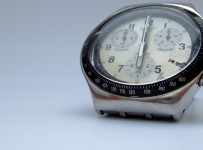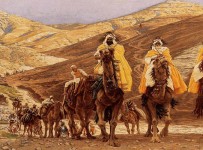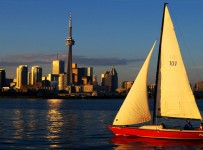This Monday was the Boston Marathon. As I’ve written in the past, I will probably never run a marathon, but I can definitely appreciate how difficult a marathon must be. I have a hard enough time running 6.2 miles, that I can imagine how long 26.2 miles must feel like.
I’ve always wondered how they came up with that length, 26.2 miles. Why not 26 or 27? And what is that distance in kilometers? Let’s find out in today’s edition of Wonder Why Wednesday…
How Was The Length Of A Marathon Determined?
Before I started researching this topic, I figured that a marathon was such an odd number of miles because it was a whole number of kilometers.
I was wrong. A marathon is 42.195 kilometers. So if it isn’t a whole number of miles or kilometers, where did the distance come from?
First some history…
The name “marathon” comes from the legend of Pheidippides, a Greek messenger, who ran from the city of Marathon to Athens to deliver the message that the Greeks had defeated the Persians in the 490 BC Battle of Marathon.
The most common route and the one Pheidippides would have used on his journey, is roughly 26 miles.
The marathon has been an Olympic event since the birth of the Modern Olympics in 1896. However, from the first Modern Olympics through 1920, a span of seven Olympics, a total of six different distances were used in the marathon.
- 24.85 miles in 1896 and 1904
- 25.02 miles in 1900
- 26.01 miles in 1906
- 26.22 miles in 1908
- 24.98 miles in 1912
- 26.56 miles in 1920
In 1921, the International Association of Athletics Federations (IAAF) figured it was time to determine an official distance for the marathon. They chose the 1908 Olympic distance of 26.22 miles (or 26 miles and 385 yards) which has been the official distance for the marathon ever since.
The course for the 1908 Olympic marathon was set to begin at the Windsor Castle and end with a lap inside White City Stadium. In order to have the race finish in front of the Queen of England and her Royal Box, the final lap was shortened to a partial lap. The distance from Windsor Castle to White City Stadium was 26 miles and the shortened lap was 385 yards. Thus the official length of the marathon was set.
Why did they pick the 1908 distance, you ask?
Because the 1908 Olympic marathon was one of the most famous marathons ever. Italian Dorando Pietri led as he entered the Olympic Stadium. He was well ahead of the competition but because the temperature was so hot, he was dehydrated and could barely walk. In fact, he was woozy that he fell numerous times on the final lap and even started running the wrong direction. As the other runners entered the stadium, Pietri was so close, but it was clear he could not finish on his own. Olympic officials decided to help him across the finish line.
Johnny Hayes from the United Stated finished second. The US protested the assisted finish and Pietri was disqualified. Hayes was awarded the Gold Medalist.
So there you have it. A controversial finish, an altered route and the Queen of England all helped determined the length of the marathon. And that length is still going strong 100+ years later.
Here are some fun marathon facts:
- Fastest time by a female – 2:15:25 by Paula Radcliffe of Kenya on September 29, 2013
- Fastest time by a male – 2:02:57 by Dennis Kimetto of Kenya on September 28, 2014
- On September 28, 2014, not only did Dennis Kimetto break the record, but Emmanuel Mutai, also of Kenya, also broke the old record of 2:03:23, with his finish of 2:03:13. He broke the record but had to settle for 2nd place.
- Oldest finisher – Fauja Singh was 100 years old when he finished in 2011. But he could not produce an official birth certificate from India, so his record is not accepted by the official governing body.
- Youngest finisher – Budhia Singh from India finished at just 3 years. His coach was later arrested for exploiting and being cruel to the child. Shocker.
- There are approximately 500 marathons organized worldwide with roughly 550,000 finishers every year.
Photo credit: Wikipedia




